UPLAND HEATH
DESCRIPTION
Upland heath is dominated by heathers such as ling (Calluna vulgaris) and bell heather (Erica cinerea) and other dwarf shrubs such as bilberry (Vaccinium myrtillus). Dry heathland occurs on mineral soils, while wet heathland occurs on shallow peat.
At Bwlch Corog the dominant habitat across the site is wet upland heath. It is associated with blanket bog, the latter occurring on more waterlogged ground with deeper peat. These peatlands are formed in climates of high rainfall and low evapotranspiration. The peat is dead plant material, mainly mosses and heathers. The waterlogged acidic conditions prevent decomposition.
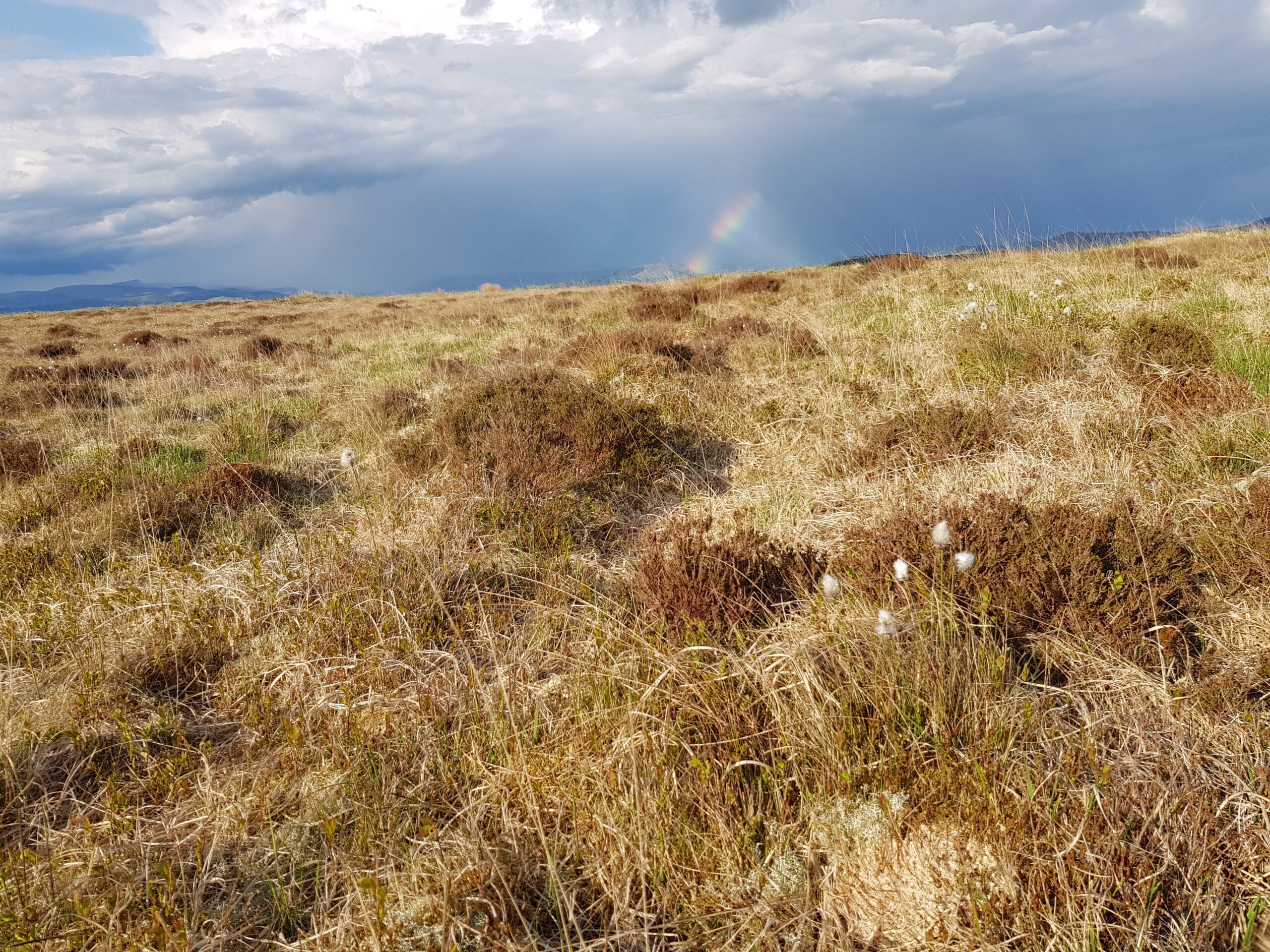
Wet upland heaths are not natural in Wales, being artefacts of past human impacts on the landscape. After the Ice Age, native forest of birch, pine and other trees colonised the landscape, including upland areas. The forest was cleared for agriculture about 4,500 years ago. In areas of high rainfall, rain leached out the nutrients from the soil now that it was unprotected by tree cover. This caused the soil to become more acidic and the leached minerals were deposited in a ‘hard pan’ at a lower depth in the soil. In some places, the charcoal from the burnt trees created the hard pan. The hard pan impeads drainage and causes the land to become permanently wet. With cultivation no longer possible on this land, the acidic, infertile soils were colonised by heathers and mosses, which form the peat.
BWLCH COROG
At Bwlch Corog, the upland area of around 120 hectares (300 acres) was drained during the 1930s by digging 11 kilometers of drainage ditches or ‘grips’. These were installed on the flatter areas of blanket bog as well as on the heathland slopes. The idea was to dry the soil to make productive pasture. We have no record of how the vegetation developed after drainage but by 2017, when Bwlch Corog was acquired for the project, there was a well established monoculture of purple moor grass (Molinia caerulea) covering most of the area.
There is one significant area of wet heath on the moorland. With the ling, bell heather and bilberry, other plants growing on the heathland are cross-leaved heath (Erica tetralix), bog cotton (Eriophorum angustifolium), cranberry (Vaccinium oxycoccos), bog asphodel (Narthecium ossifragum), tormentil (Potentilla erecta), heath bedstraw (Galium saxatile), green-ribbed sedge (Carex binervis), various mosses and lichens, and grasses tufted hair-grass (Deschampsia flexuosa), deergrass (Trichophorum cespitosum) and of course the ubiquitous purple moor-grass (Molinia caerulea) which dominates most of the site.
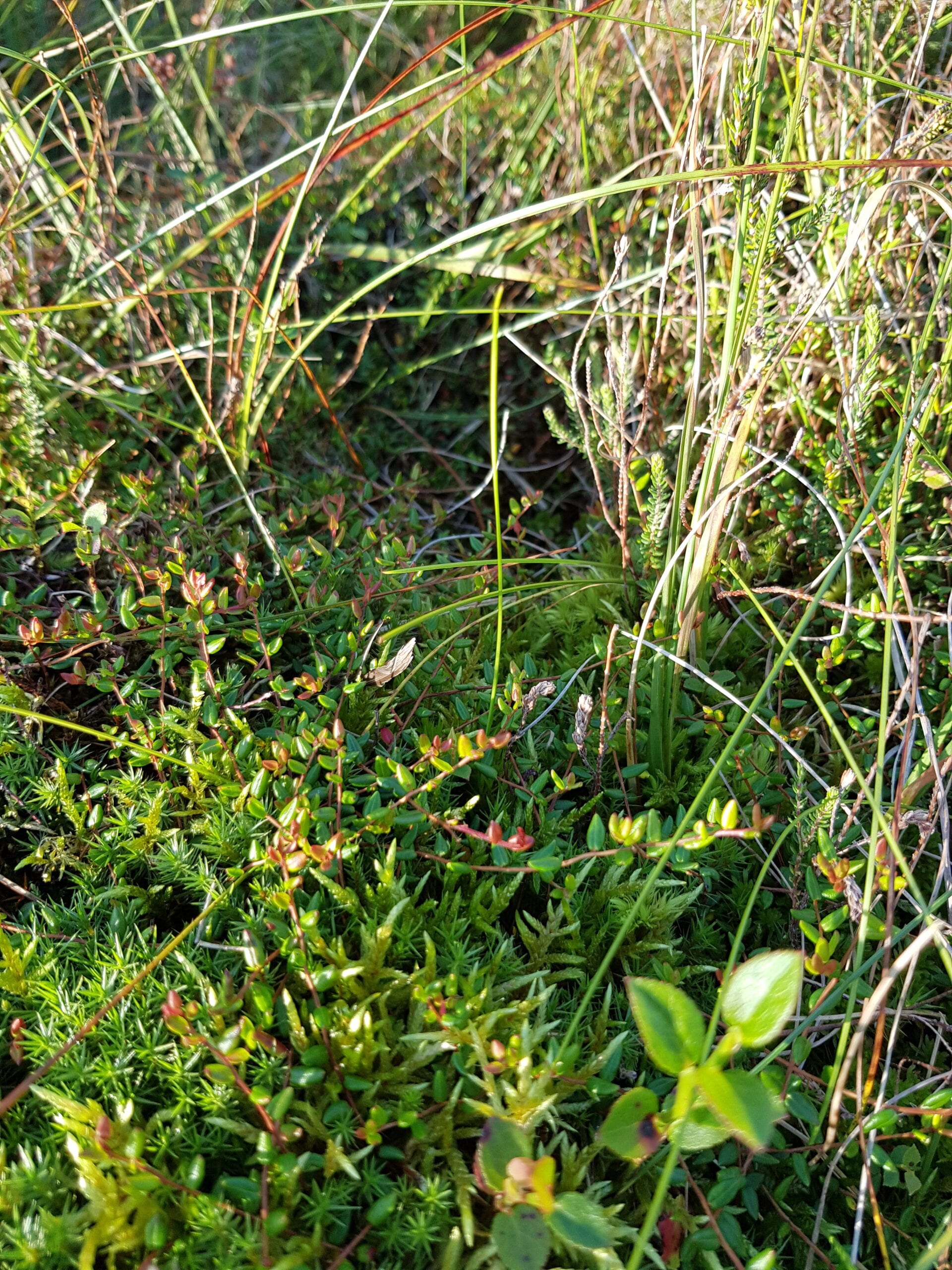
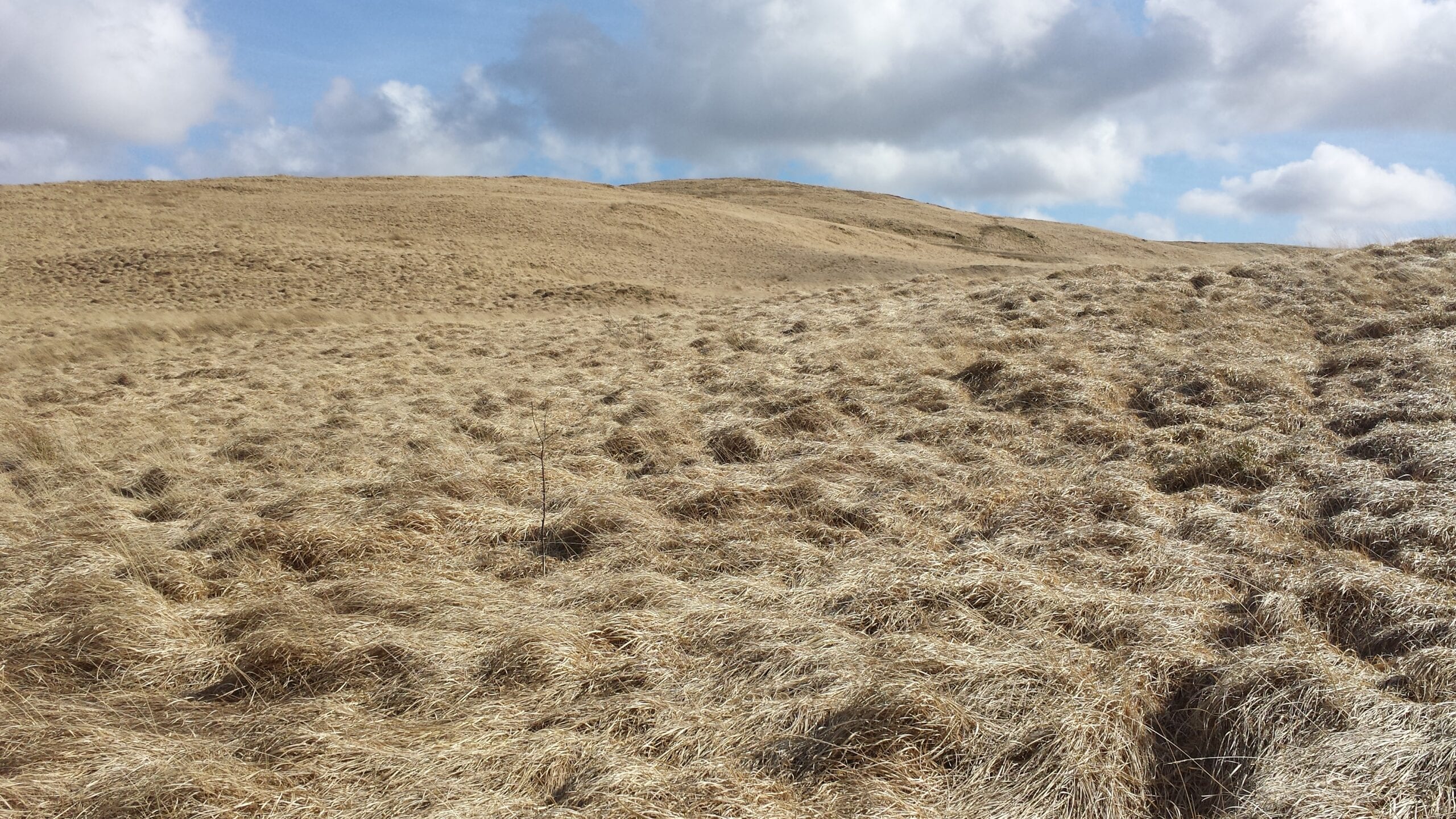
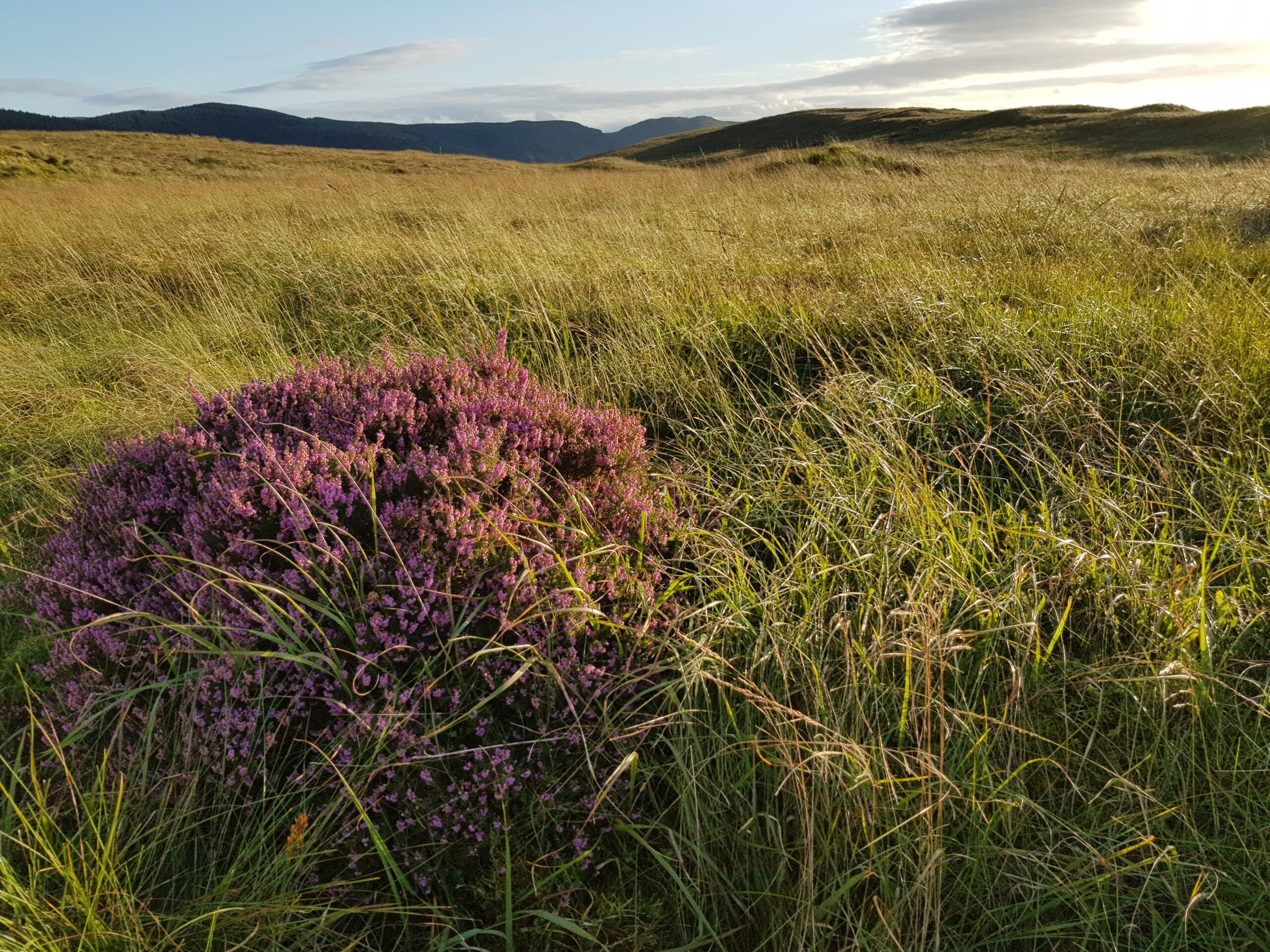
MOLINIA
The tendency for Molinia to dominate moorland vegetation is a widespread phenomenon in Britain and is thought to be linked to drainage, burning, increase in sheep grazing in preference to cattle, and nitrogen deposition from air pollution.
Molinia is a native grass species and a significant component of upland heath and some other special habitats, for example Rhos pasture, certain wet woodlands, and bog woodlands.
The name purple moor grass comes from the colour of the early spring growth – during the summer it is green. It is unpalatable for many grazing animals and is a deciduous grass, meaning that the leaves (blades) die off in the winter. This creates the enigmatic straw colour of the winter moorland. The problem with Molinia is that by not being grazed it outcompetes other plants, and the dead grass forms a dense mat which smothers the ground, preventing other plants from growing. It ends up being a monoculture with little diversity or wildlife interest, which is exactly what we have at Bwlch Corog. It has a characteristic structure of large tussocks with minimal space between tussocks, which can make moorland walking a torment.
DRAINAGE
There are other problems associated with land drainage. Ditches take rain water off the hill almost immediately and into the streams and rivers. Floods are therefore more frequent and more severe downstream and these often affect populated areas. Even without flooding, the excessive water flow ends up in the ocean without providing benefits for wildlife or human society. Conversely, in dry periods, without water being stored in the uplands, the streams and rivers dry up more readily, causing water shortages for wildlife and humans.
Drainage also causes soil erosion due to fast flowing water in the grips. This contaminates water purity which can severely impact wildlife, for example fish eggs, and can cause problems for human water supplies.
Peat, as dead vegetation, is storing carbon. It depends on being permanently waterlogged and anaerobic to maintain this stable state. With drainage, the peat dries out and the carbon is exposed to the air, allowing it to oxidize. As carbon dioxide, it escapes into the atmosphere as a greenhouse gas.
Despite their artificial origins as a result of deforestation, wet upland heaths are now valued for their wildlife interest and other benefits.
RESTORATION
Heathland restoration at Bwlch Corog is being achieved by reversing the drainage to restore the natural hydrology of the peatland. The drainage grips were blocked during 2019 using a series of peat dams spaced every 10 metres along the grips. The peat for the dams is taken from around the grip, so that a hollow is dug above the dam: as the flow is stopped a pond is formed. We now have over a thousand small ponds across the site, creating new habitat for wildlife. Over time, the stagnant water will become colonised by plants and the dead plant material will fill up the ponds and ditches.
In the meantime, the natural hydrology is restored to the peatland with immediate effect. The ground is clearly wetter or indeed waterlogged each side of the grips. The effect on vegetation will be to kill off Molinia which will gradually be replaced by mosses. A more immediate effect is the colonisation of heathland plants in the exposed peat on the pond edges.
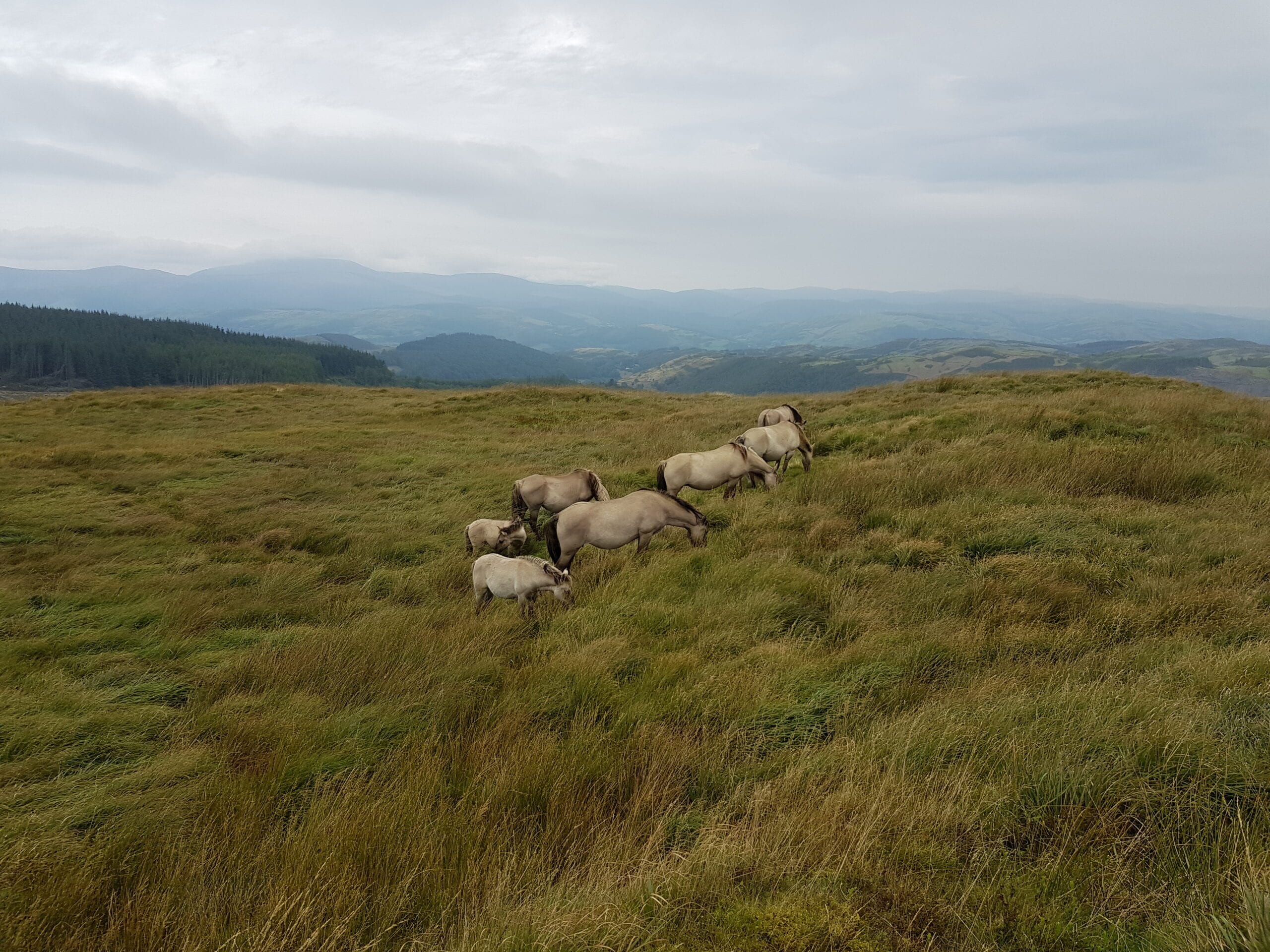
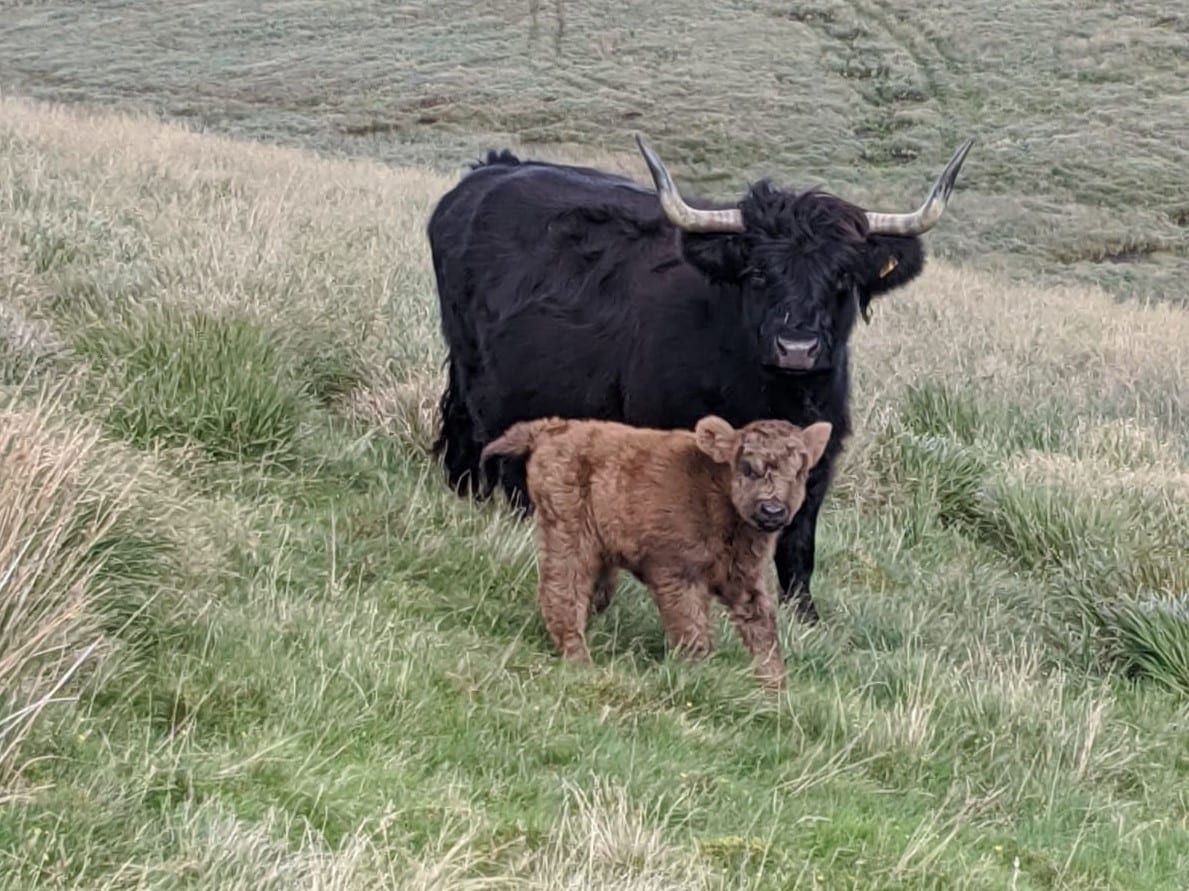
The other major change is in the grazing. The site was not grazed for about 7 years, and during this time there was some recovery of the dwarf shrubs in the absence of sheep. However, the Molinia presents a significant challenge to other vegetation. In 2018 we introduced a herd of wild horses to Bwlch Corog. The Konik breed is very hardy and survives on rough grazing and will even eat Molinia, though they prefer almost any other vegetation they can find. The horses are joined for the summer by a herd of Highland cattle, which also graze on Molinia. The grazing along with the trampling of these large herbivores reduce the size of the Molinia tussocks and make space between the tussocks, also exposing the soil. This is enabling other plants to colonise and creat diversity on the moorland. Due to the scale of the site and the predominance of Molinia it is a slow process, but close inspection reveals some diversity in most places.
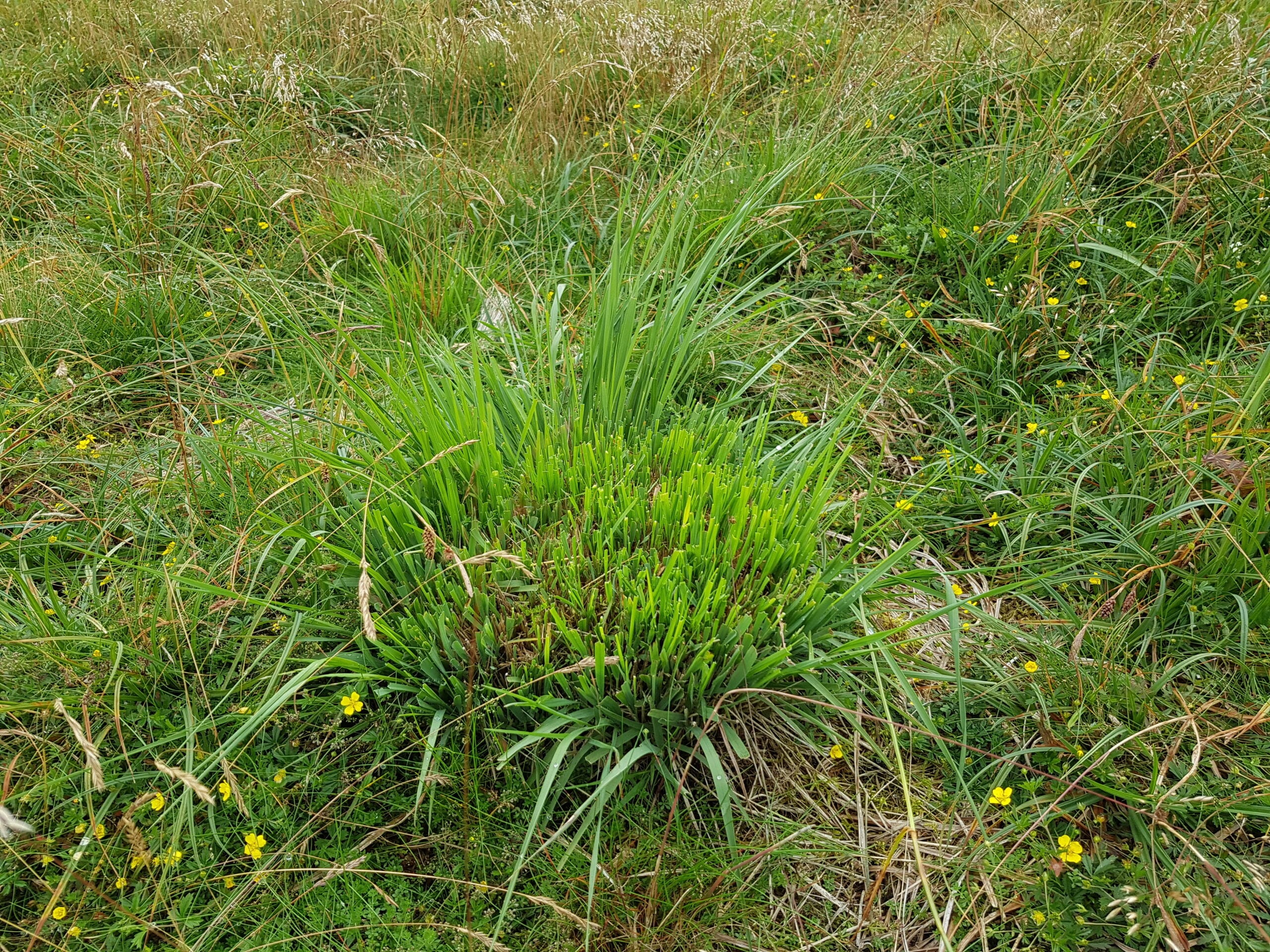
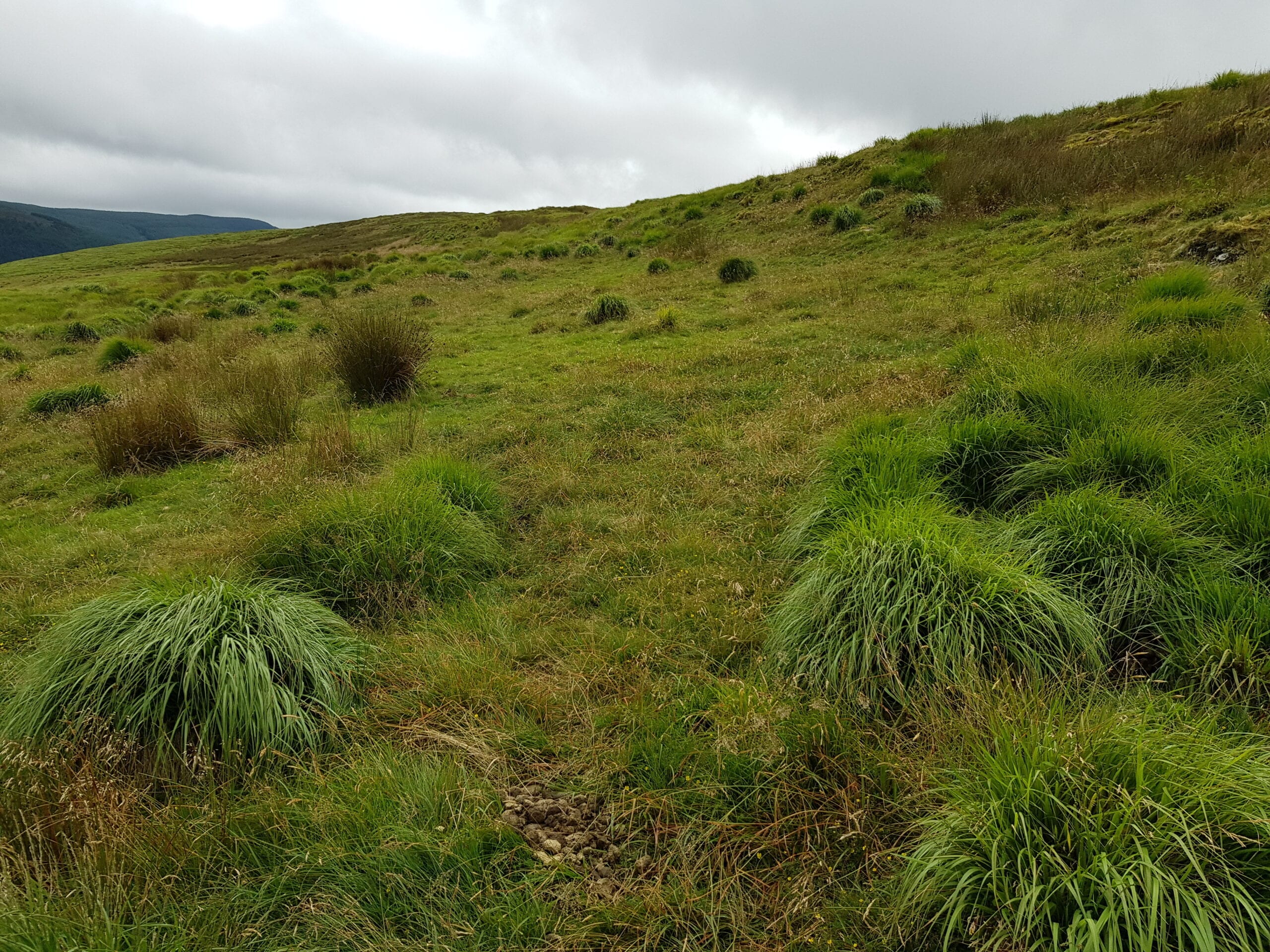
As well as one significant area of wet heath, some heather, bilberry and mosses have survived in small patches hidden amongst the Molinia. Some heathland restoration projects have used scarification and sowing of heather seeds to accelerate the restoration process. This is a possibility at Cambrian Wildwood; we are also willing to to take a long view and minimise further intervention. Having removed the unnatural drainage and introduced large herbivores, it will be interesting to see how the vegetation develops.
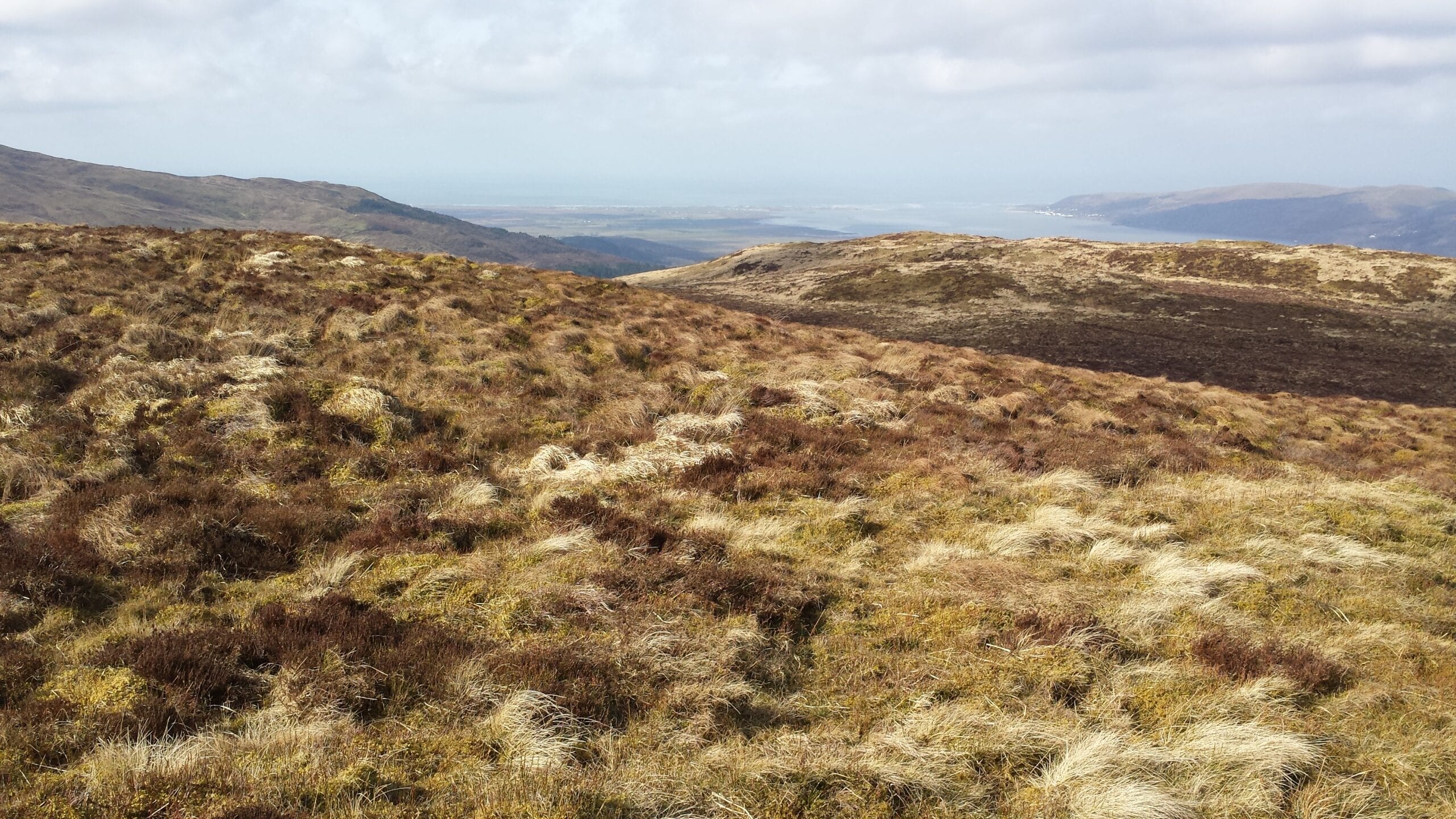
Wet heathland on neighbouring property, designated as a Site of Special Scientific Interest. This has been grazed by feral horses for about 25 years and is a good example of the condition and scale of the habitat that we can expect to see at Bwlch Corog.
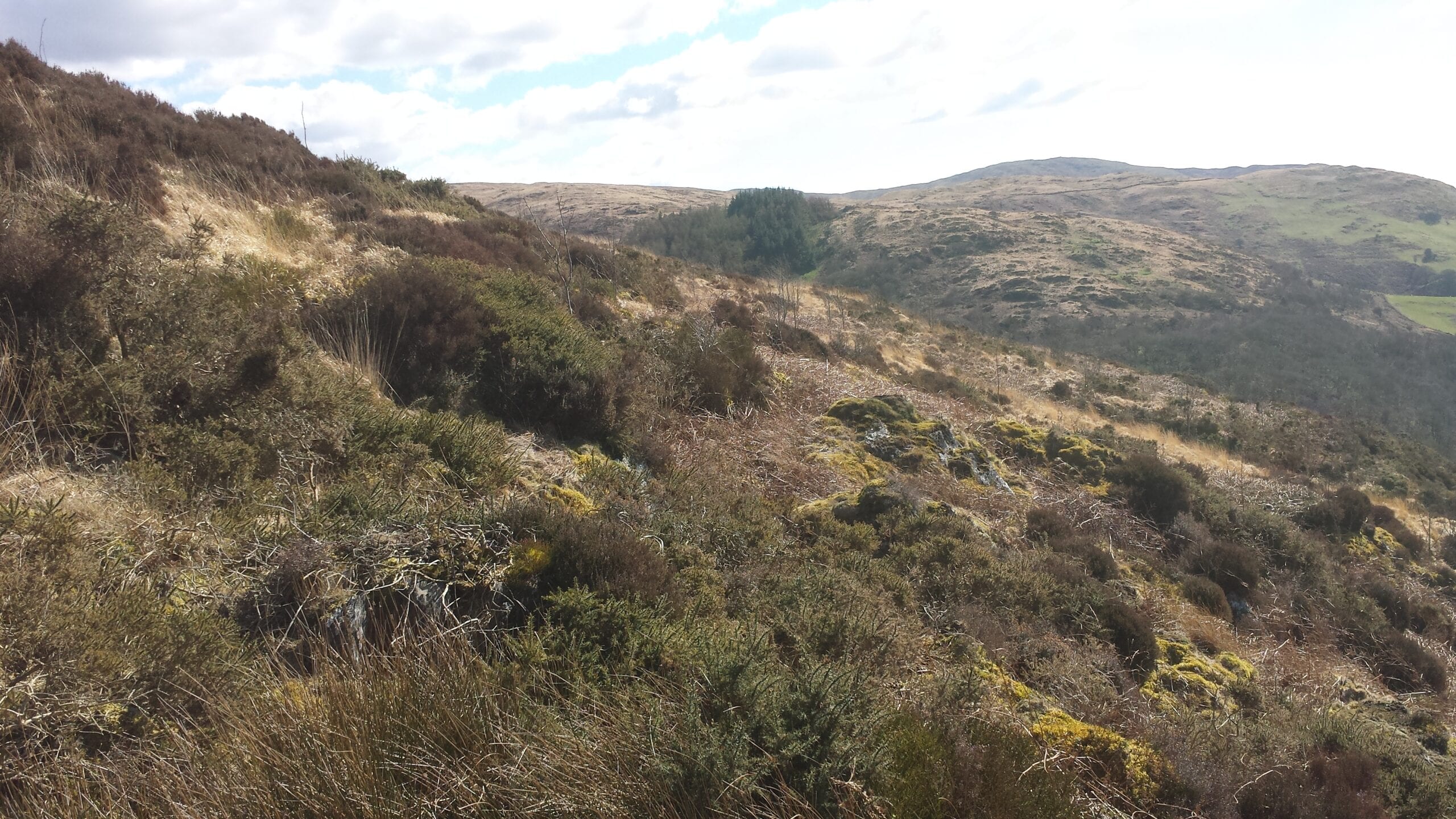
Heathland on a property near Bwlch Corog. This area has not been grazed for about 30 years. It has developed into a very diverse and interesting habitat with gorse and young trees growing along with the heather and other heathland plants. It attracts abundant wildlife including nightjar.
For more detail on the grip blocking work, see our Bog Restoration news post
For more information on the vegetation at Bwlch Corog see:
Vegetation survey of Bwlch Corog, Ceredigion 2005 (part 1)
Vegetation survey of Bwlch Corog, Ceredigion 2005 (part 2)
Bwlch Corog Vegetation Assessment Sep 2017
